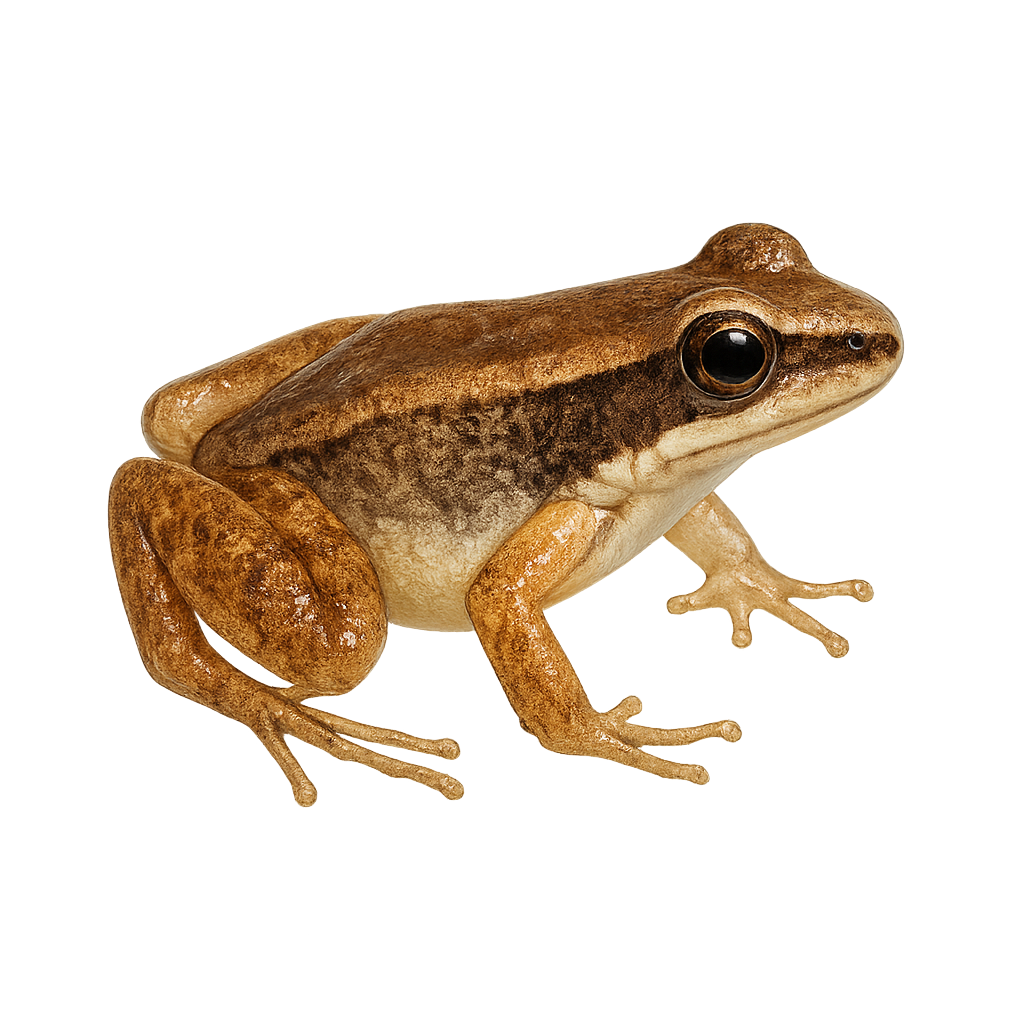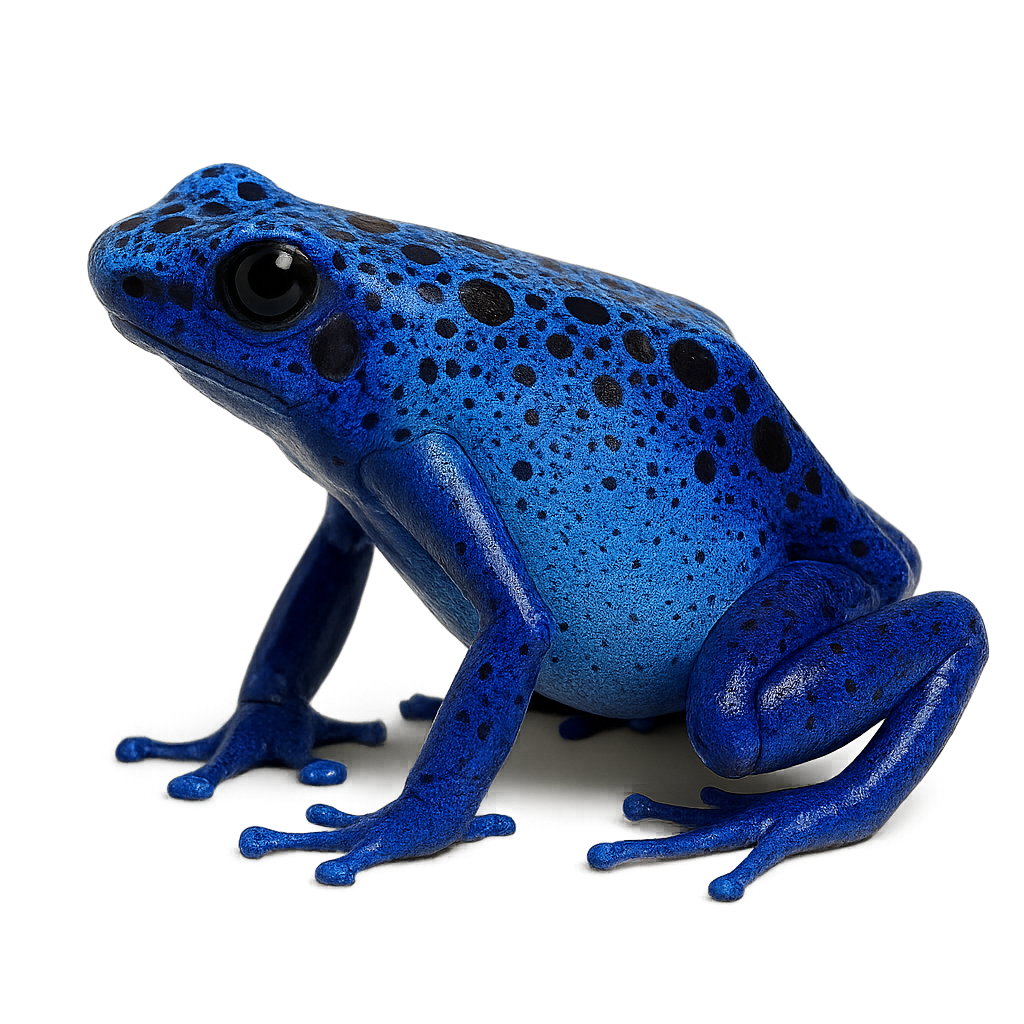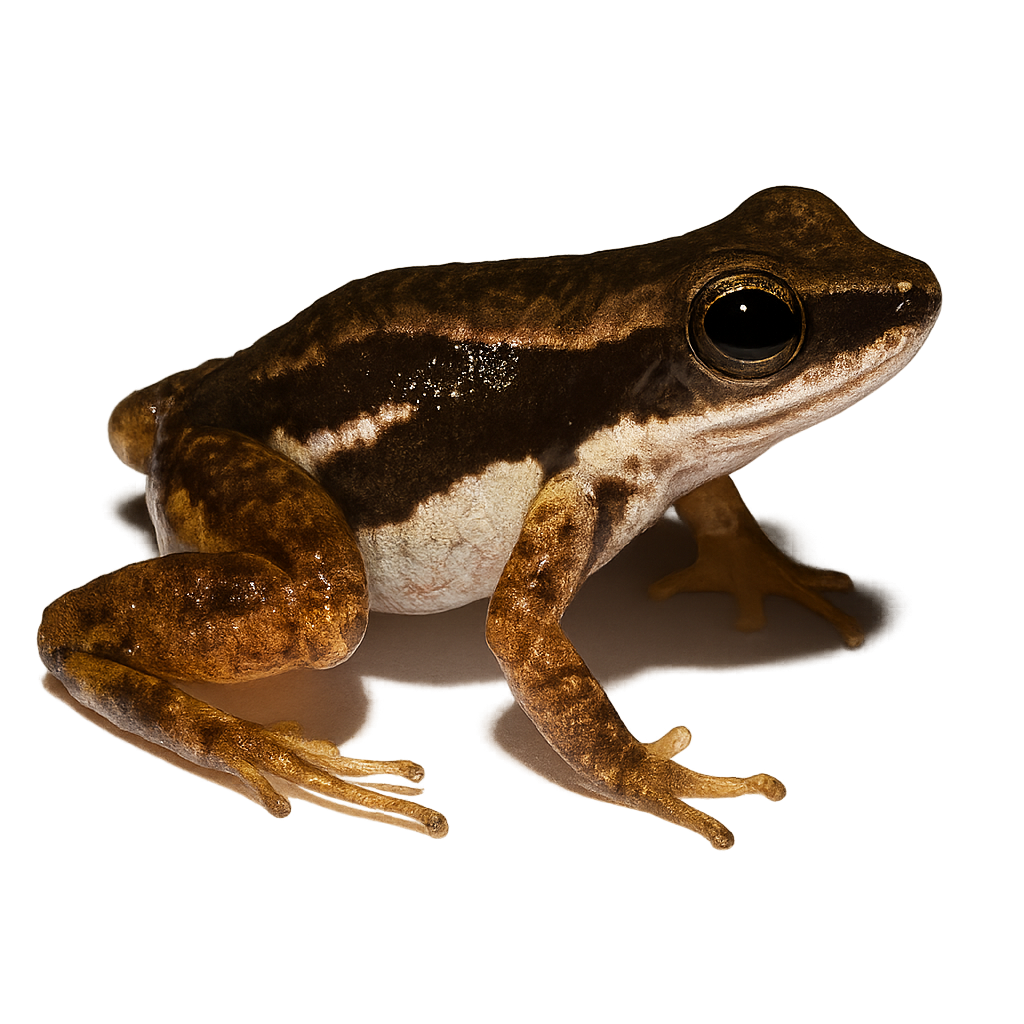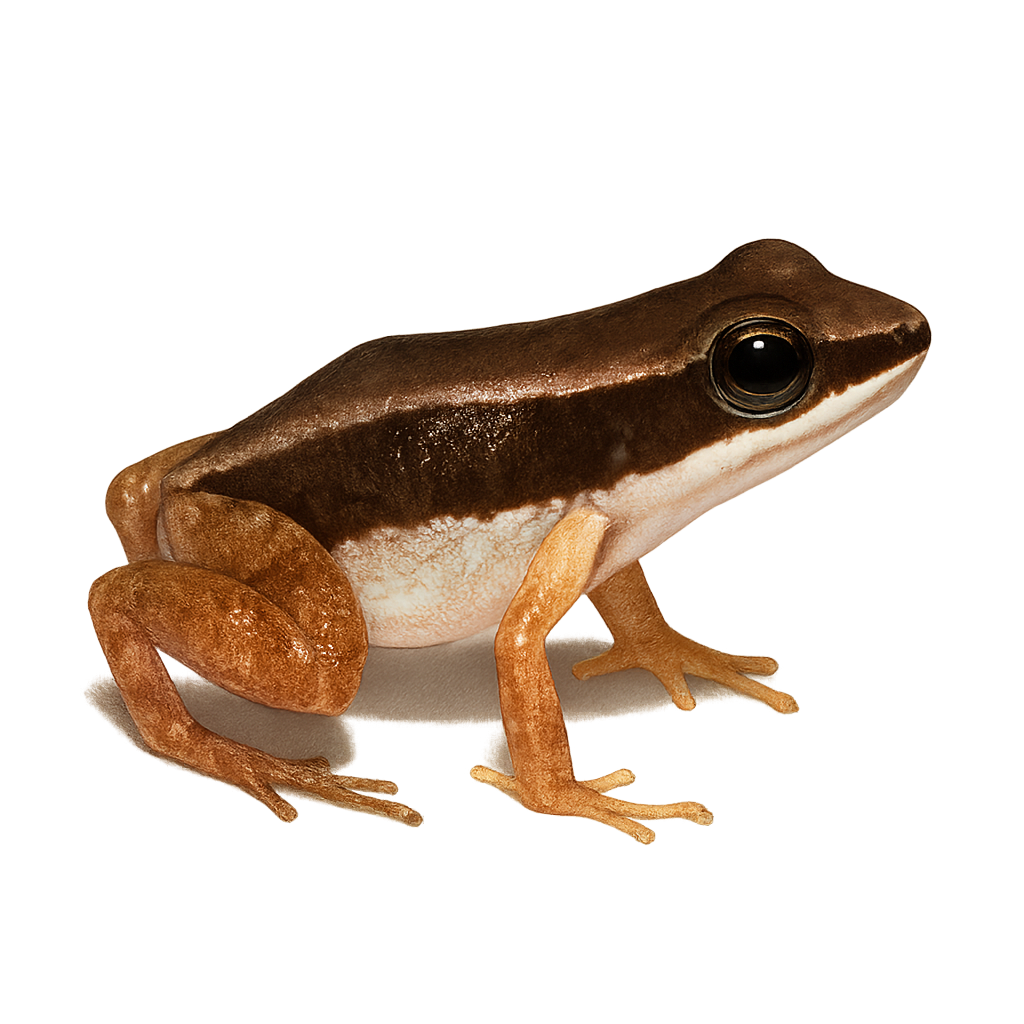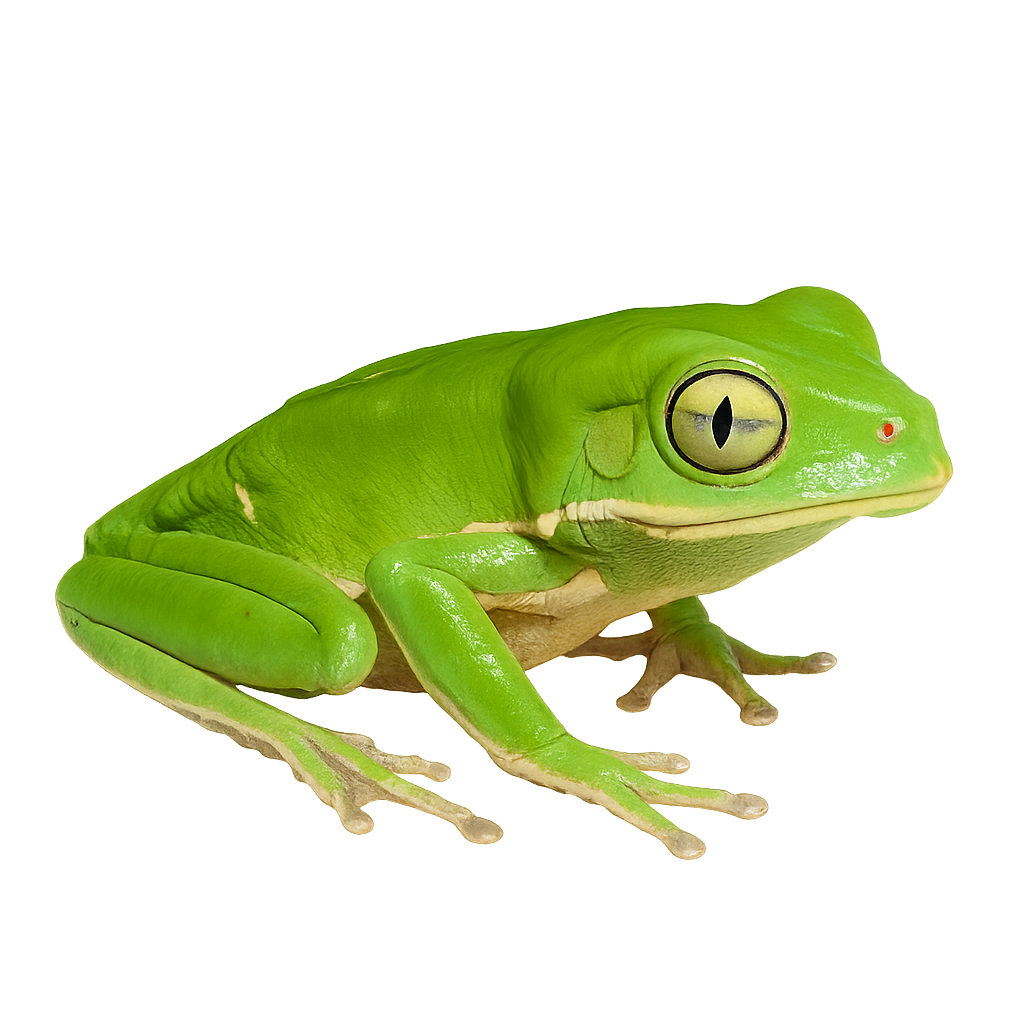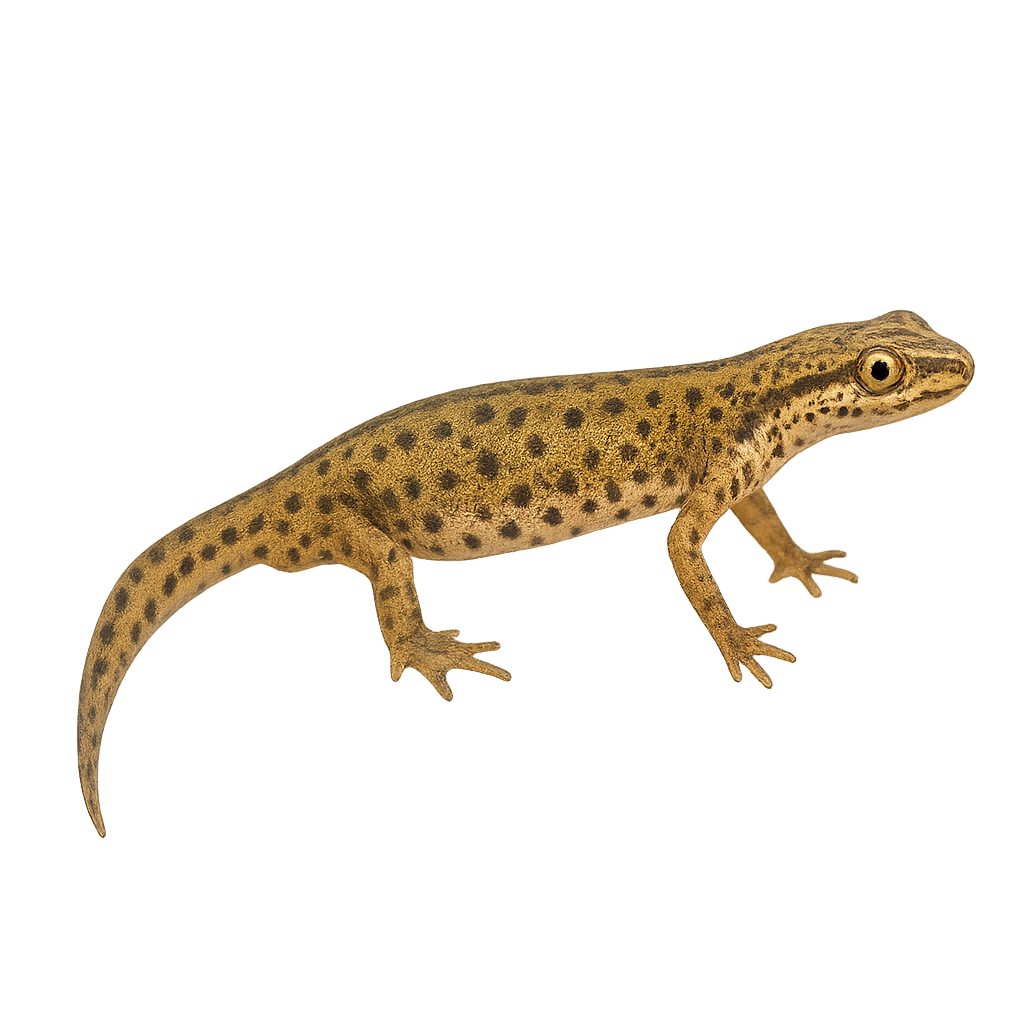The Palm rocket frog is a small, colorful frog native to the humid tropical forests of South America, particularly in Colombia and Ecuador. It is characterized by its smooth skin and vibrant color patterns, ranging from brown to green with black spots. This species is primarily terrestrial, although it is often found near water bodies where it breeds. Males are known for their distinctive calls, which play a crucial role in attracting females. The Palmate Rocket Frog is diurnal, meaning it is active during the day. It primarily feeds on small insects and other invertebrates. Although its population is stable, it is threatened by deforestation and habitat loss.
The Dendrobatidés, belonging to the Dendrobatidae family, is a small frog known for its bright colors and toxic behavior. These frogs typically measure between 2 and 6 centimeters in length and are easily recognizable by their shiny, colorful skin, which can be yellow, blue, red, or green, depending on the species. They are primarily found in the humid tropical forests of Central and South America. Their diet consists of insects, small arthropods, and occasionally small worms. Dendrobatidéss are known for their toxic secretions, which serve as defense against predators. These toxins mainly come from their diet, particularly ants and beetles that contain alkaloids. Dendrobatidéss are also both terrestrial and aquatic creatures, typically laying their eggs in humid places, where their tadpoles develop in small pools of water or decaying leaves. Although fascinating, Dendrobatidéss are vulnerable to habitat loss due to deforestation and pollution.
The Phantasmal Poison Frog, or Epipedobates tricolor, is a small, brightly colored frog native to the humid tropical forests of Ecuador. Known for its vivid colors ranging from red to green and yellow, it uses these hues as a warning to potential predators of its toxicity. This diurnal species primarily feeds on small insects and is often seen on the forest floor, where it blends in with the fallen leaves. Despite its small size, it plays a crucial role in the ecosystem by controlling insect populations. Unfortunately, it is threatened by deforestation and habitat loss.
The Polkadot poison frog, scientifically known as Oophaga arborea, is a fascinating species from the Dendrobatidae family. It is primarily known for its bright coloration and distinctive patterns, which serve as a warning to potential predators. This frog is endemic to the humid tropical forests of Central America, where it primarily inhabits trees and shrubs. It is diurnal, meaning it is active during the day, and feeds mainly on small insects. Its skin secretes powerful toxins, a common trait among frogs of this family. Preserving its natural habitat is crucial for its survival, as it is sensitive to environmental changes.
The Panamanian Rocket Frog, scientifically known as Colostethus panamansis, is a small amphibian species primarily found in the humid tropical forests of Panama. It is characterized by its smooth skin and vibrant colors, often a mix of brown and green, which allow it to effectively camouflage in its natural environment. This species is known for its distinctive calls, used by males to attract females during the breeding season. It prefers habitats close to water streams, where it can find its diet mainly consisting of insects. Although its conservation status is not alarming, deforestation and water pollution pose potential threats to its survival.
The Pratt's Rocket Frog, scientifically known as Colostethus pratti, is a fascinating species from the Dendrobatidae family. It is primarily found in the humid tropical forests of Central and South America, particularly in Colombia and Panama. This small frog is usually brownish with lighter patterns on its back, allowing it to blend effectively into its natural surroundings. It is known for its high-pitched, repetitive calls, often heard during the rainy season. Although discreet, it plays a crucial role in the ecosystem as an insect predator. Its conservation is essential, as it is sensitive to environmental changes and deforestation.
The Peru poison frog, or Ameerega petersi, is a vibrant and colorful frog species primarily found in the humid rainforests of the Amazon. It is distinguished by its smooth skin and bright color patterns, often a combination of blue, black, and yellow. These colors serve as a warning to potential predators, as this frog secretes powerful toxins. It is generally small, measuring between 2 and 3 centimeters. Its natural habitat includes dense, humid undergrowth, where it primarily feeds on small insects. The Peters' Poison Frog is diurnal, meaning it is active during the day. Its conservation is crucial due to the increasing deforestation threatening its natural habitat.
The Painted-belly Leaf Frog, scientifically known as Phyllomedusa sauvagii, is a remarkable arboreal amphibian native to the dry Gran Chaco region of Argentina, Paraguay, and Bolivia. It is characterized by its thick, waxy skin that helps minimize water loss, an essential adaptation for survival in its arid habitat. Its bright green coloration provides excellent camouflage among leaves, while its golden eyes and adhesive fingers allow it to move effortlessly through trees. This frog is primarily nocturnal, resting during the day to avoid intense heat. It feeds mainly on insects and other small invertebrates. Although its conservation status is currently "least concern," habitat destruction poses a potential threat.
The Polka-dot Tree Frog, Hypsiboas punctatus, is a species of tree frog found primarily in South America. It is recognizable by its smooth skin and distinctive spotted patterns on a bright green background. These frogs are generally small, measuring about 3 to 4 cm in length. They are nocturnal and spend the day hidden in dense vegetation. Their call is a key part of their reproductive behavior, attracting mates during the rainy season. They primarily feed on insects and play an important role in controlling pest insect populations. Although they are widespread, their habitat is threatened by deforestation and pollution.
The Polka‑dot treefrog, or Boana punctata, is a species of amphibian in the Hylidae family. It is characterized by its smooth skin and dark spots on a bright green background, allowing it to blend effectively into its natural habitat. It is primarily nocturnal and found in the tropical rainforests of Central and South America. It is arboreal, spending most of its time in trees. Reproduction typically occurs during the rainy season, when males call to attract females. Eggs are laid in water, where tadpoles develop before metamorphosing into adult frogs.
The palmate newt is a small urodele amphibian, 6–9 cm long, with an olive-brown back dotted with dark spots and a yellow-orange belly. It inhabits temporary ponds, ditches, and woodland wetlands in temperate Europe. Solitary and unobtrusive, it feeds on aquatic insects and small crustaceans with its speedy tongue.


